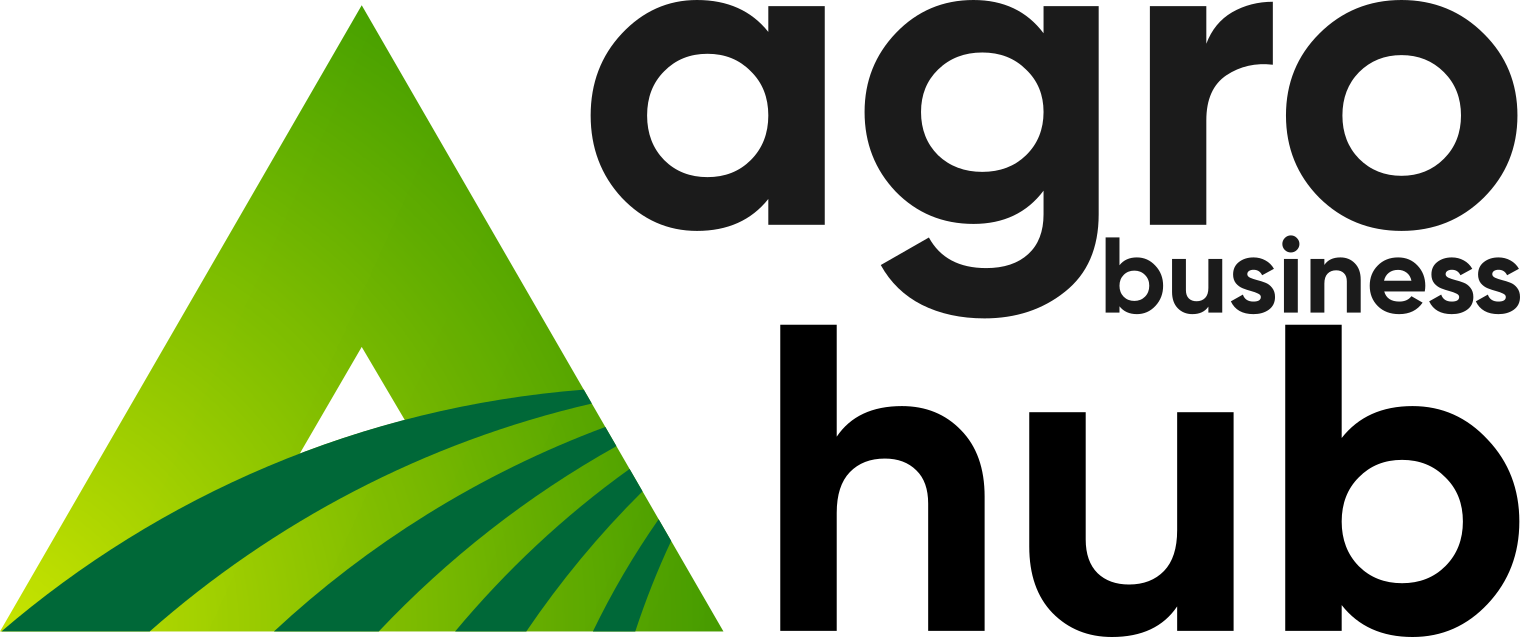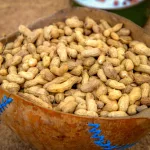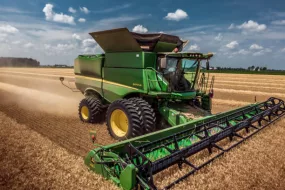Are you a modern farmer looking to take your agricultural practices to the next level? If so, you’re in the right place. In today’s digital age, technology is transforming the way we approach farming. Agriculture monitoring systems are at the forefront of this revolution, enabling farmers to make data-driven decisions that can significantly improve productivity and reduce resource wastage.
In this ultimate guide, we’ll walk you through the process of choosing the right agriculture monitoring system for your farm. By the end of this article, you’ll have a clear understanding of what to look for and how to make an informed decision. Let’s dive in!
Read, Also >>>>>> A Step-by-Step Guide On How To Boost Your Crop Yields with Drone Spraying
Why Do You Need an Agriculture Monitoring System?
Before we delve into the nitty-gritty of selecting a monitoring system, let’s first understand why it’s essential for modern farming.

1. Precision Farming
Agriculture monitoring systems, often associated with precision farming, allow you to monitor and manage your farm with pinpoint accuracy. They provide real-time data on soil conditions, weather patterns, crop health, and more. With this information, you can tailor your farming practices to maximize yield and minimize waste.
2. Resource Optimization
In agriculture, resources such as water, fertilizer, and pesticides are costly and finite. Monitoring systems help you optimize the use of these resources by providing insights into when and where they are needed most. This not only reduces costs but also promotes sustainability.
3. Crop Management
Managing crops effectively is crucial for a successful harvest. Monitoring systems offer crop-specific data, helping you make decisions regarding planting, irrigation, and disease control. This results in healthier crops and higher yields.
4. Risk Mitigation
Farming comes with its fair share of risks, from unpredictable weather events to pests and diseases. Agriculture monitoring systems can provide early warnings and preventive measures to mitigate these risks, ultimately safeguarding your farm’s profitability.
Now that you understand the importance of agriculture monitoring systems, let’s move on to the steps to choose the right one for your farm.
Step 1: Assess Your Farm’s Needs
in choosing the right agriculture monitoring system for your farm is to assess your farm’s needs. This step is crucial because every farm is unique, and understanding your specific requirements is the foundation for making an informed decision. Here’s how to go about it:
1. Identify Your Crops and Livestock:
- Start by listing all the crops you cultivate on your farm. Note their types, quantities, and any specific requirements they may have. If you have livestock, include them in your assessment, considering factors like the number of animals and their needs.
2. Determine the Size of Your Farm:
- Measure the size of your farm in acres or hectares. The scale of your operation can influence the type and scope of the monitoring system you’ll need.
3. Set Your Budget:
- Determine how much you’re willing to invest in an agriculture monitoring system. Consider both the initial costs and potential ongoing expenses, such as subscription fees or maintenance.
4. Define Your Farming Goals:
- Think about your long-term goals for your farm. Are you aiming to increase crop yields, reduce resource usage, improve sustainability, or enhance overall farm efficiency? Understanding your objectives will help you choose a system that aligns with your goals.
5. Consider Environmental Factors:
- Take note of your farm’s location and the environmental conditions that affect it. Factors like climate, rainfall patterns, and soil types can impact the choice of monitoring system. For example, farms in arid regions may prioritize water management systems.
6. Evaluate Existing Equipment:
- Consider any existing farm equipment and infrastructure you have. Your chosen monitoring system should integrate seamlessly with your current setup to avoid compatibility issues.
7. Think About Future Expansion:
- Reflect on whether you plan to expand your farm in the future. If growth is on the horizon, you’ll want a monitoring system that can scale with your needs.
8. Consult with Farming Experts:
- Don’t hesitate to seek advice from experienced farmers or agricultural consultants. They may offer valuable insights based on their own experiences and expertise.
By completing this assessment, you’ll have a clear picture of your farm’s unique needs and objectives. This information will serve as a valuable reference point as you move forward in selecting the ideal agriculture monitoring system.
Step 2: Understand the Types of Agriculture Monitoring Systems
understanding the various types of agriculture monitoring systems available. Each type has its own set of features and capabilities, and knowing the options will help you choose the system that best fits your farm’s needs. Here are the key types of agriculture monitoring systems to consider:
1. Weather and Environmental Monitoring Systems:
- These systems focus on collecting data related to weather conditions, soil moisture levels, temperature, humidity, and other environmental factors. They are ideal for farms that need to closely track climate-related variables.
- Use cases: Weather and environmental monitoring systems are valuable for predicting weather-related risks like frost, drought, or excessive rainfall. They help you make decisions about irrigation, planting, and harvesting based on real-time data.

2. Crop Monitoring Systems:
- Crop monitoring systems are designed to assess the health and growth of your crops. They provide information on nutrient levels, pest infestations, disease outbreaks, and overall crop health.
- Use cases: These systems are perfect for farms looking to maximize crop yields and quality. They enable proactive pest and disease management, precise irrigation, and nutrient management.
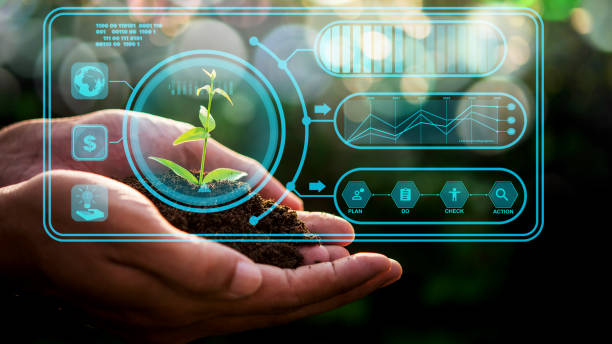
3. Livestock Monitoring Systems:
- If you have livestock on your farm, livestock monitoring systems can help track the health, location, and behavior of your animals.
- Use cases: These systems ensure the well-being of your livestock, improve farm management, and provide alerts for issues such as animal health emergencies or irregular behavior.
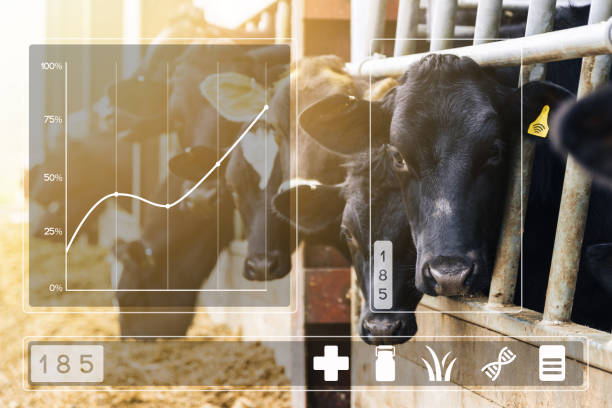
4. Soil Health and Nutrient Monitoring Systems:
- These systems focus specifically on the condition of your soil, including its nutrient levels and pH balance.
- Use cases: Soil health and nutrient monitoring systems are crucial for farms aiming to optimize fertilizer application, reduce nutrient runoff, and maintain soil fertility over the long term.

5. Water Management Systems:
- Water management systems are dedicated to monitoring and optimizing your water usage. They help ensure efficient irrigation and prevent water wastage.
- Use cases: Farms in water-scarce areas or those aiming to reduce water usage and costs can benefit from water management systems. These systems often include features like drip irrigation control and soil moisture monitoring.
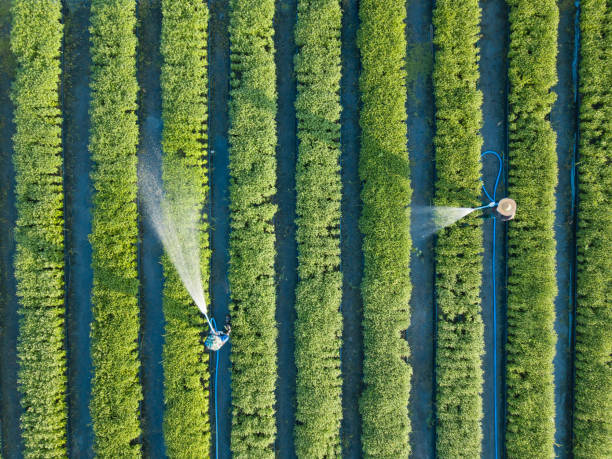
6. Drone and Satellite Imaging Systems:
- Drones and satellite imaging provide a bird’s-eye view of your farm, allowing for large-scale monitoring and analysis of crop health, pest infestations, and overall field conditions.
- Use cases: These systems are excellent for farms with extensive acreage. They enable early detection of crop issues, efficient pest management, and precise resource allocation.

7. Livestock Tracking and Health Monitoring:
- For farms primarily focused on livestock, tracking, and health monitoring systems help ensure the well-being of your animals. They may include GPS tracking, vital sign monitoring, and behavior analysis.
- Use cases: Farms with a significant livestock component, such as dairy or poultry farms, benefit from these systems to optimize animal health and productivity.
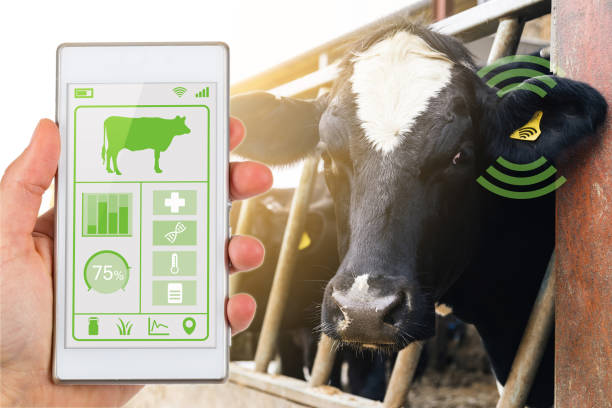
Understanding these different types of agriculture monitoring systems will allow you to narrow down your options based on your farm’s specific needs and objectives. In the next steps, we’ll delve deeper into factors like data accuracy, compatibility, and budget considerations to help you make the right choice.
Step 3: Consider Data Accuracy and Reliability
considering the data accuracy and reliability of the agriculture monitoring system you’re considering for your farm. Ensuring that the system provides precise and dependable information is crucial for making informed decisions. Here’s how to evaluate data accuracy and reliability:

1. Sensor Technology:
- Examine the sensor technology used by the monitoring system. High-quality sensors are essential for accurate data collection. Look for systems that use advanced sensor technology to measure variables like soil moisture, temperature, humidity, and more.
2. Calibration and Maintenance:
- Check if the monitoring system requires regular calibration and maintenance. Well-maintained sensors are more likely to provide accurate readings over time. Some systems offer self-calibration features, which can be a convenient option.
3. Data Validation and Quality Control:
- Inquire about the system’s data validation and quality control processes. Systems that employ data validation techniques and quality control checks are more likely to filter out erroneous readings, ensuring the accuracy of the data you receive.
4. Historical Data and Accuracy Records:
- Ask for historical data and accurate records from the monitoring system provider. This information can give you insights into the system’s track record of providing accurate data under various conditions.
5. User Feedback and Reviews:
- Research user feedback and reviews from other farmers who have used the system. Real-world experiences from fellow farmers can provide valuable insights into the accuracy and reliability of the system in practical farming scenarios.
6. Data Transmission and Connectivity:
- Consider the system’s data transmission and connectivity features. A stable and reliable data connection is essential for receiving real-time data updates. Check if the system offers redundancy options to ensure data continuity in case of connectivity issues.
7. Warranty and Support:
- Review the warranty and customer support policies of the monitoring system provider. A strong warranty and responsive customer support can be indicators of their commitment to data accuracy and customer satisfaction.
8. Integration with External Data Sources:
- Some monitoring systems allow integration with external data sources, such as weather forecasts or satellite data. This can enhance the accuracy of the system’s predictions and recommendations.
9. Data Backup and Recovery:
- Inquire about data backup and recovery features. Having a reliable data backup system can protect your historical data and ensure you don’t lose critical information.
10. Accuracy in Challenging Conditions:
Assess how the monitoring system performs in challenging conditions, such as extreme weather events or unusual soil conditions. Reliable systems should continue to provide accurate data even in adverse circumstances.
By thoroughly evaluating the data accuracy and reliability of the agriculture monitoring system, you can be confident that the information it provides will be trustworthy and valuable for making informed decisions on your farm.
Step 4: Compatibility and Integration
Step 4 focuses on compatibility and integration, which are essential considerations when choosing an agriculture monitoring system for your farm. Ensuring that the system seamlessly integrates with your existing equipment and software can streamline data management and decision-making processes. Here’s how to assess compatibility and integration:
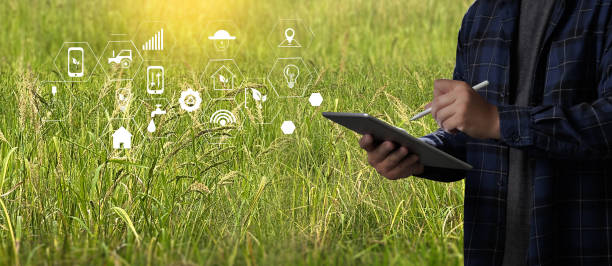
1. Existing Equipment and Software:
- Begin by creating a list of the equipment and software you currently use on your farm. This may include tractors, irrigation systems, farm management software, and more.
2. Compatibility Assessment:
- Check if the agriculture monitoring system you’re considering is compatible with your existing equipment and software. Compatibility issues can lead to data silos and inefficiencies, so it’s crucial to choose a system that can easily connect with what you already have.
3. Communication Protocols:
- Inquire about the communication protocols supported by the monitoring system. Common protocols include Wi-Fi, Bluetooth, cellular, and radio frequency (RF). Ensure that the system uses protocols that align with your farm’s infrastructure.
4. API and Data Integration:
- Ask if the monitoring system offers Application Programming Interfaces (APIs) or data integration options. APIs allow different software applications to communicate and share data. If the system provides APIs, it can integrate more smoothly with other software tools you use.
5. Customization and Scalability:
- Consider whether the system allows for customization and scalability. A system that can be tailored to your farm’s specific needs and can grow with your operation is ideal.
6. Data Flow and Accessibility:
- Evaluate how data flows within the system and how accessible it is. Make sure the monitoring system provides user-friendly interfaces or dashboards for accessing and interpreting the data collected.
7. Compatibility with Mobile Devices:
- Check if the system is compatible with mobile devices such as smartphones and tablets. Mobile compatibility allows you to access real-time data while on the go, enhancing your farm management capabilities.
8. Third-Party Integrations:
- Explore whether the monitoring system offers integrations with third-party services or platforms. Integrations with weather services, market data, or agricultural advisory services can provide valuable insights.
9. Data Export and Analysis:
- Ensure that the system allows you to export data for in-depth analysis or reporting. The ability to export data in common formats (e.g., CSV, Excel) is beneficial for generating custom reports and conducting advanced analytics.
10. Compatibility Testing:
If possible, conduct compatibility testing before making a final decision. This can involve setting up a trial period to ensure that the monitoring system seamlessly integrates with your existing farm infrastructure.
By prioritizing compatibility and integration, you can avoid data silos, streamline your farm management processes, and make the most of your agriculture monitoring system’s capabilities while leveraging your existing resources and technology.
Step 5: User-Friendliness
Step 5 focuses on the user-friendliness of the agriculture monitoring system you’re considering. A user-friendly interface and system are essential to ensure that you and your farmworkers can easily utilize the technology without complications. Here’s how to evaluate the user-friendliness of a monitoring system:
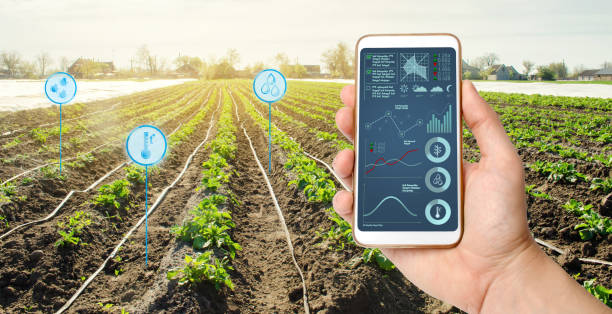
1. User Interface (UI):
- Examine the system’s user interface. It should be intuitive and easy to navigate. Look for a clean and organized dashboard that provides access to relevant data and features.
2. Ease of Setup:
- Consider how easy it is to set up the monitoring system. A straightforward installation process can save time and frustration. Check if the provider offers setup assistance or tutorials.
3. Training and Support:
- Inquire about the availability of training resources and customer support. The system provider should offer training materials, user guides, and responsive customer support to assist you and your team as needed.
4. Mobile Accessibility:
- Check if the monitoring system is accessible on mobile devices such as smartphones and tablets. Mobile compatibility allows you to monitor your farm while on the move, providing flexibility in farm management.
5. Alerts and Notifications:
- Evaluate the system’s alert and notification features. It should be capable of sending timely alerts via email, SMS, or mobile app notifications to keep you informed of critical events or changes in farm conditions.
6. Data Visualization:
- Consider how the system presents data. Visual representations such as graphs, charts, and maps can make it easier to interpret complex information. Clear data visualization can aid in decision-making.
7. User Permissions and Roles:
- If multiple individuals will be using the system, check if it supports user permissions and roles. This allows you to control who can access specific features and data, enhancing security and data management.
8. Language and Localization:
- Confirm whether the system supports your preferred language and localization. This is especially important if you or your team speak multiple languages or if you operate in different regions.
9. Feedback Mechanism:
- Look for a feedback mechanism within the system. Being able to provide feedback or report issues directly to the system provider can contribute to system improvements over time.
10. Intuitive Data Interpretation:
The system should not only collect data but also provide insights and recommendations in an understandable manner. Ensure that you can easily interpret the data and act upon it.
11. User Community and Forums:
Check if there is an active user community or forums related to the monitoring system. These platforms can be valuable for sharing tips, troubleshooting, and learning from other users’ experiences.
User-friendliness is crucial because it can impact how effectively you and your team utilize the monitoring system. An intuitive and accessible system can help you make informed decisions quickly and efficiently, ultimately enhancing your farm’s productivity and management.
Step 6: Budget Considerations
Step 6 focuses on budget considerations when choosing an agriculture monitoring system. It’s essential to find a system that aligns with your budget while providing the features and capabilities you need for your farm. Here’s how to approach budget considerations:
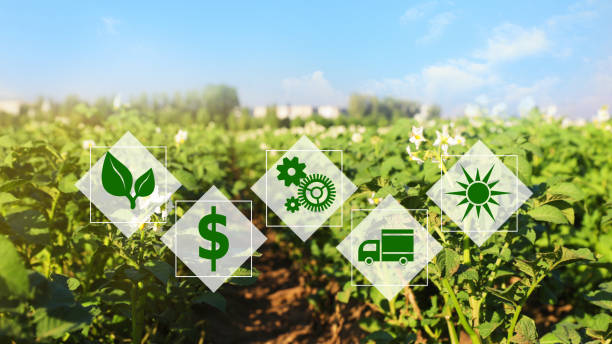
1. Establish a Budget Range:
- Begin by setting a clear budget range for your agriculture monitoring system. Consider both the initial investment and any potential ongoing costs, such as subscription fees or maintenance.
2. Total Cost of Ownership (TCO):
- Calculate the total cost of ownership over the expected lifespan of the monitoring system. This includes not only the initial purchase price but also any recurring costs, upgrades, and maintenance expenses.
3. Compare Different Systems:
- Research and compare multiple monitoring systems to get a sense of their pricing models. Different providers may offer varying pricing structures, so it’s important to explore your options.
4. Consider ROI (Return on Investment):
- Evaluate the potential return on investment that the monitoring system can offer. Will the system’s capabilities lead to increased yields, reduced costs, or improved efficiencies that justify the investment?
5. Evaluate Subscription Models:
- If the monitoring system operates on a subscription-based model, carefully review the pricing tiers and the features included in each tier. Ensure that the chosen subscription level aligns with your farm’s needs and budget.
6. Factor in Long-Term Benefits:
- Consider the long-term benefits and savings that the monitoring system can provide. For example, a system that helps optimize resource usage may lead to significant cost savings over time.
7. Explore Financing Options:
- Look into financing options or payment plans that may be available from the system provider. Some providers offer flexible payment arrangements to help you manage the initial investment.
8. Avoid Over-Engineering:
- While it’s important to have a system that meets your needs, avoid over-engineering. Opt for features and capabilities that directly contribute to your farm’s productivity and efficiency, rather than unnecessary bells and whistles.
9. Factor in Scalability:
- Consider how the monitoring system’s cost may change as your farm expands. Ensure that the system is scalable and that any additional expenses associated with growth are manageable within your budget.
10. Evaluate Cost-Saving Features:
Look for features within the monitoring system that can lead to cost savings. For example, a system that helps optimize irrigation can reduce water usage and associated costs.
11. Seek Competitive Quotes:
Request competitive quotes from different monitoring system providers. This can give you a clearer understanding of the range of prices available in the market.
By carefully considering your budget and exploring the costs associated with different monitoring systems, you can make an informed decision that aligns with your financial resources while providing the benefits and capabilities your farm needs. Remember, it’s not just about finding the cheapest option, but rather the one that offers the best value for your specific farm operation.
Step 7: Scalability
Step 7 focuses on scalability, which is the ability of the agriculture monitoring system to grow and adapt with your farm as it expands or your needs change. Choosing a system with scalability in mind ensures that your investment remains valuable over the long term. Here’s how to assess scalability:

1. Evaluate Current Needs:
- Begin by understanding your current needs and farm size. Consider the number of fields or livestock, the types of crops, and the size of your operation.
2. Consider Future Growth:
- Think about how you envision your farm evolving in the future. Do you plan to expand the size of your operation, diversify your crops, or introduce new livestock? Understanding your growth potential is essential.
3. System’s Capacity:
- Check if the monitoring system can accommodate your projected growth. Look for information on the system’s maximum capacity, such as the number of sensors it can support or the size of the area it can monitor.
4. Modular Components:
- Some monitoring systems offer modular components that allow you to add sensors or expand the system’s capabilities as needed. Modular systems can be more easily scaled to match your growing farm.
5. Compatibility with Additional Equipment:
- Assess whether the monitoring system can integrate with additional equipment or sensors that you may need in the future. Compatibility with third-party devices can extend the system’s functionality.
6. Data Management for Growth:
- Consider how the system handles data management and storage as your farm grows. Ensure that it can efficiently manage and store increasing amounts of data without performance degradation.
7. Subscription Plans:
- If the monitoring system operates on a subscription model, review the provider’s subscription plans for scalability options. Verify that you can easily upgrade your plan to accommodate additional sensors or features as your farm expands.
8. Consult with the Provider:
- Reach out to the system provider and discuss your scalability requirements. They can provide insights into how the system can grow with your farm and may offer guidance on adapting the system to your changing needs.
9. Budget for Expansion:
- Plan for the budget required for scalability. While scalability is an essential feature, it’s important to factor in the associated costs of adding more sensors, devices, or features as your farm expands.
10. Training and Support for Scaling:
Inquire about training and support options related to scaling the system. Ensure that you and your team can effectively manage and utilize the expanded system.
Scalability is crucial for ensuring that your agriculture monitoring system remains relevant and effective as your farm grows. By selecting a system that can adapt to your changing needs, you can make a long-term investment that continues to provide value and support your evolving farm operation.
Read, Also >>>>>> A Step-by-Step Guide On How To Boost Your Crop Yields with Drone Spraying
Step 8: Data Security and Privacy
Step 8 focuses on data security and privacy when choosing an agriculture monitoring system. Protecting your farm’s data is critical, as it often contains sensitive information about your operations. Here’s how to assess data security and privacy:

1. Data Encryption:
- Check if the monitoring system employs data encryption both in transit and at rest. Encryption ensures that your data is protected from unauthorized access during transmission and while stored on servers.
2. Access Control:
- Verify that the system offers robust access control mechanisms. You should be able to define who can access different parts of the system and what level of data they can view or modify.
3. Data Ownership and Control:
- Clarify the terms related to data ownership and control. Ensure that you retain ownership of your farm’s data, and the system provider does not claim ownership or usage rights without your consent.
4. Compliance with Regulations:
- Confirm that the monitoring system complies with relevant data protection regulations and industry standards. For example, in the United States, the system should adhere to the requirements of the General Data Protection Regulation (GDPR) and other applicable laws.
5. Data Backup and Recovery:
- Inquire about data backup and recovery procedures. Ensure that the system has robust backup mechanisms to prevent data loss and rapid recovery processes in case of unexpected events.
6. Data Retention Policies:
- Understand the system’s data retention policies. Some systems allow you to set how long data is retained, which can be important for compliance and managing storage costs.
7. Audit Trails:
- Look for systems that provide audit trails or logs of data access and changes. These logs can be crucial for monitoring and investigating any unauthorized or suspicious activities.
8. Secure User Authentication:
- Ensure that the system employs secure user authentication methods, such as multi-factor authentication (MFA), to prevent unauthorized access to your account.
9. Privacy Settings for Farm Data:
- Check if the system allows you to configure privacy settings for your farm data. You should have the option to keep certain data private or share it only with authorized parties.
10. Third-Party Data Handling:
If the system involves third-party data handling or integrations, assess how these third parties handle your data and ensure that they also follow stringent security and privacy practices.
11. Incident Response Plan:
Inquire about the system provider’s incident response plan. Understand how they address and communicate security incidents, such as data breaches or system vulnerabilities.
12. Legal Agreements:
Carefully review the terms of service or contracts provided by the monitoring system provider. Ensure that data security and privacy provisions are clearly outlined and agreeable to you.
Prioritizing data security and privacy is essential to protect your farm’s sensitive information and maintain the trust of your customers and partners. By thoroughly assessing these aspects, you can make an informed decision while safeguarding your data and complying with relevant regulations.
Step 9: Seek Recommendations
Step 9 involves seeking recommendations from fellow farmers, agricultural experts, and trusted sources to gather insights and feedback on agriculture monitoring systems. Recommendations can be invaluable in making an informed decision. Here’s how to go about it:
1. Connect with Fellow Farmers:
- Reach out to fellow farmers in your local community or agricultural networks. They can provide firsthand experiences and recommendations based on the monitoring systems they have used.
2. Attend Agricultural Workshops and Events:
- Participate in agricultural workshops, conferences, and events where you can interact with other farmers and experts. These events often include discussions on technology and monitoring systems.
3. Join Online Agricultural Communities:
- Join online forums, social media groups, or communities dedicated to agriculture. These platforms are excellent for connecting with farmers from around the world and gathering diverse perspectives.
4. Consult with Agricultural Extension Services:
- Contact your local agricultural extension services or agencies. They often have valuable insights and can recommend suitable monitoring systems based on your region’s specific agricultural needs.
5. Engage with Agricultural Consultants:
- Consider consulting with agricultural consultants or experts who specialize in precision farming and technology. They can provide tailored recommendations based on your farm’s requirements.
6. Seek Input from Trusted Suppliers:
- If you have trusted suppliers or vendors for farming equipment or services, inquire if they have recommendations for monitoring systems. They may have partnerships or insights to share.
7. Research Online Reviews and Testimonials:
- Explore online reviews and testimonials related to different monitoring systems. Look for reviews from farmers who have similar farm sizes and needs to yours.
8. Request References from System Providers:
- When you narrow down your choices to specific monitoring system providers, ask them for references or case studies. Hearing about successful implementations on similar farms can be reassuring.
9. Consider Government Programs:
- Some government agricultural programs or initiatives may offer guidance and recommendations on adopting modern farming technologies, including monitoring systems.
10. Create a List of Pros and Cons:
As you gather recommendations and feedback, create a list of pros and cons for each system you’re considering. This will help you make a more informed and balanced decision.
11. Ask About Lessons Learned:
When speaking with other farmers, inquire about any lessons they’ve learned from using monitoring systems. They may share valuable insights and tips for successful implementation.
12. Consider Local Conditions:
Keep in mind that recommendations should align with your local climate, soil conditions, and farming practices. What works well for one region may not be as effective in another.
By seeking recommendations and leveraging the knowledge and experiences of others in the agricultural community, you can gain valuable insights into the most suitable agriculture monitoring system for your specific farm. This collaborative approach can help you make a well-informed decision and enhance the success of your farm’s technology adoption.
Conclusion
In conclusion, choosing the right agriculture monitoring system for your farm is a significant decision that can impact your farm’s productivity, efficiency, and long-term success. By following the nine steps outlined in this guide, you can make an informed choice that aligns with your farm’s unique needs and objectives.
- Assess Your Farm’s Needs: Start by understanding your farm’s specific requirements, crops, size, budget, and long-term goals.
- Understand the Types of Agriculture Monitoring Systems: Familiarize yourself with the different types of monitoring systems available, such as weather monitoring, crop monitoring, and livestock tracking systems.
- Consider Data Accuracy and Reliability: Ensure that the system provides accurate and reliable data by evaluating sensor technology, calibration, and historical records.
- Compatibility and Integration: Choose a system that seamlessly integrates with your existing equipment and software to streamline data management.
- User-Friendliness: Prioritize a user-friendly interface and system to simplify data interpretation and decision-making.
- Budget Considerations: Set a budget range and evaluate the total cost of ownership while considering the system’s return on investment.
- Scalability: Choose a system that can grow and adapt as your farm expands or your needs change over time.
- Data Security and Privacy: Protect your farm’s sensitive data by selecting a system with strong data security measures and privacy controls.
- Seek Recommendations: Gather insights and recommendations from fellow farmers, agricultural experts, and trusted sources to inform your decision-making.
With these steps in mind, you’ll be well-prepared to select the perfect agriculture monitoring system for your farm. Remember that the ultimate goal is to harness the power of technology to optimize your farming practices, increase yields, reduce resource usage, and ensure the sustainability of your farm operation. Happy farming!
Read, Also >>>>>> A Step-by-Step Guide On How To Boost Your Crop Yields with Drone Spraying
